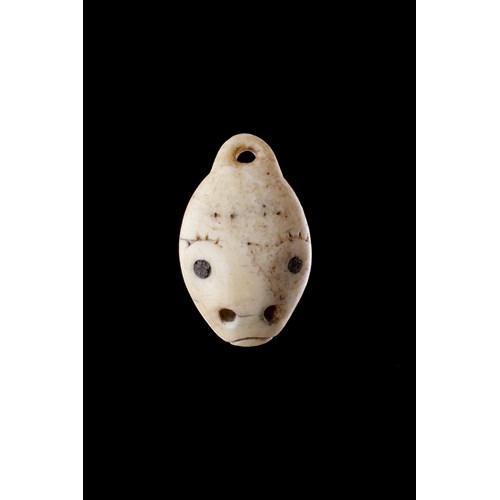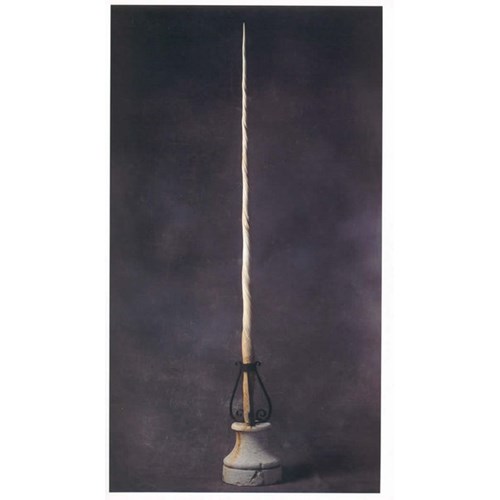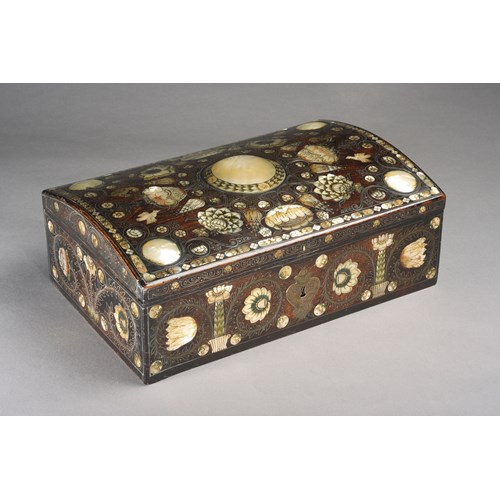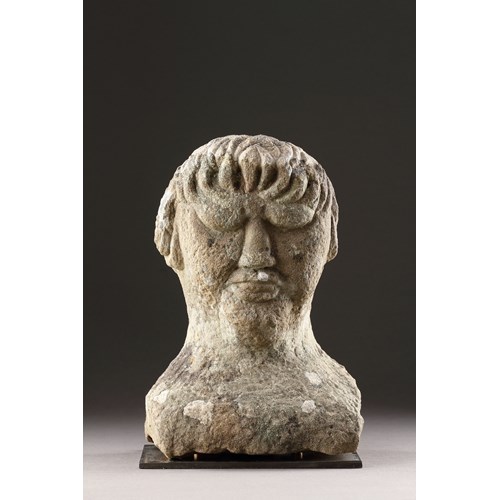Extremely Rare Sailors Scrimshaw Walking Cane of Architectural Form Carved in Relief of Sperm Whale Tooth and Pan Bone the Squared Cage Work Sections with Fluted Pillars
Period 1800-1900
Origin Anglo American
Medium Whalebone, Tortoiseshell and Whaletooth, and Silver
Period: 1800-1900
Origin: Anglo American
Medium: Whalebone, Tortoiseshell and Whaletooth, and Silver
Literature: In 1843 Joseph Bogart Hersey, third mate and ship-keeper of the schooner ‘Esquimaux’ of Provincetown wrote in his journal…. ‘3rd July. We then began to saw up and divide the bone, scarcely any of which, but was held in such high estimation as to prevent it from being wasted. The jaw and the pans were dissected to such an advantage that nearly all had a piece which would answer to make a busk, or cane, and some fortunate enough to get both.’
In the 19th century a cane was a matter of fashion rather than a utilitarian aid to mobility and walking canes of many types were produced on whale-ships to please, and sometimes sell, to those people at home. However, this superb example intricately carved with fine cage worked fluted pillars, and profusely inlaid with tortoiseshell and silver, is a ‘tour de force’ of the scrimshanders art. The whale ivory handle carved into the shape of a turks head knot is quintessentially nautical, displaying the sailor's knowledge and love of rope-work.
More artworks from the Gallery









